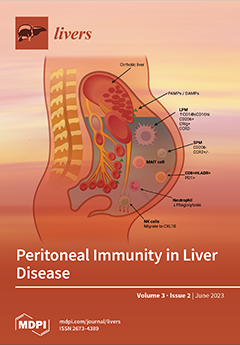Open AccessArticle
Effect of Bergamot Leaves (Citrus bergamia) in the Crosstalk between Adipose Tissue and Liver of Diet-Induced Obese Rats
by
Juliana Silva Siqueira, Erika Tiemi Nakandakare-Maia, Taynara Aparecida Vieira, Thiago Luiz Novaga Palacio, Núbia Alves Grandini, Matheus Antônio Filiol Belin, Gisele Alborghetti Nai, Fernando Moreto, Alessandra Altomare, Giovanna Baron, Giancarlo Aldini, Fabiane Valentini Francisqueti-Ferron and Camila Renata Correa
Cited by 3 | Viewed by 1444
Abstract
The excessive consumption of diets rich in sugar and fat is associated with metabolic manifestations involving adipose tissue and the liver. Bergamot, due to its antioxidant and anti-inflammatory properties, has been used to treat metabolic disorders. This work aimed to verify the effect
[...] Read more.
The excessive consumption of diets rich in sugar and fat is associated with metabolic manifestations involving adipose tissue and the liver. Bergamot, due to its antioxidant and anti-inflammatory properties, has been used to treat metabolic disorders. This work aimed to verify the effect of Bergamot leaves extract (BLE) on the crosstalk in the adipose tissue–liver axis of obese rats. For 20 weeks, Wistar rats were distributed into two groups: control (Control) and high sugar–fat (HSF) diet groups. Afterwards, the animals were redistributed into three groups for 10 weeks: control diet + vehicle (Control,
n = 08), HSF + vehicle (HSF,
n = 08), and HSF + BLE (HSF + BLE,
n = 08). The BLE was carried out daily by gavage (50 mg/kg). The HSF group presented obesity, hyperglycemia, hypertriglyceridemia, insulin resistance, hepatic microvesicular steatosis, higher inflammation and oxidative stress in the liver and adipose tissue. In comparison to the HSF group, HSF + BLE animals showed protection by reducing the triglyceride levels, insulin resistance, inflammation and oxidative stress in hepatic and adipose tissues. BLE acted on the inflammation and oxidative stress in the adipose tissue–liver axis in obese rats when compared to the HSF group, which may have reflected on the improvement of insulin resistance and dyslipidemia.
Full article
►▼
Show Figures




